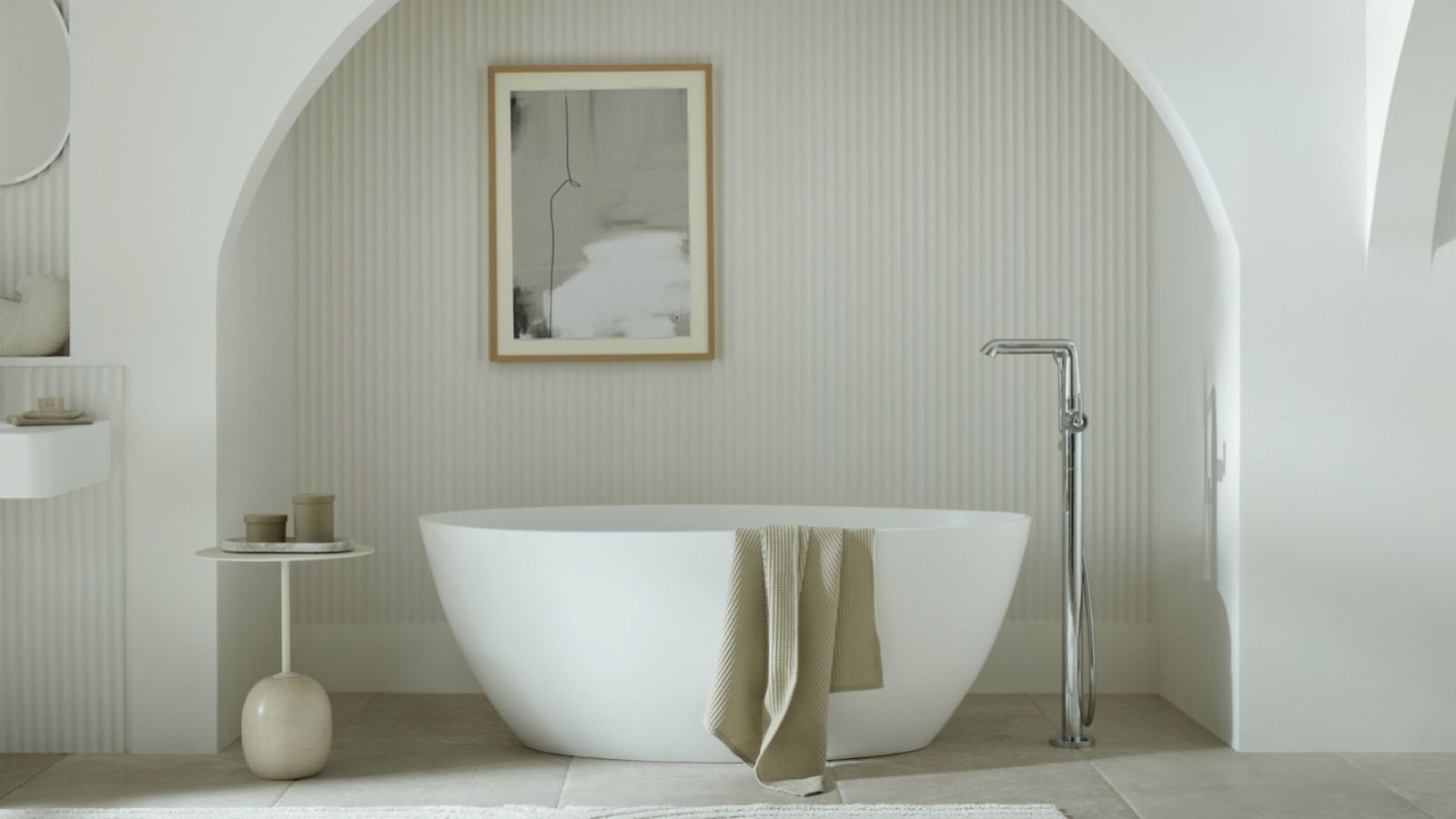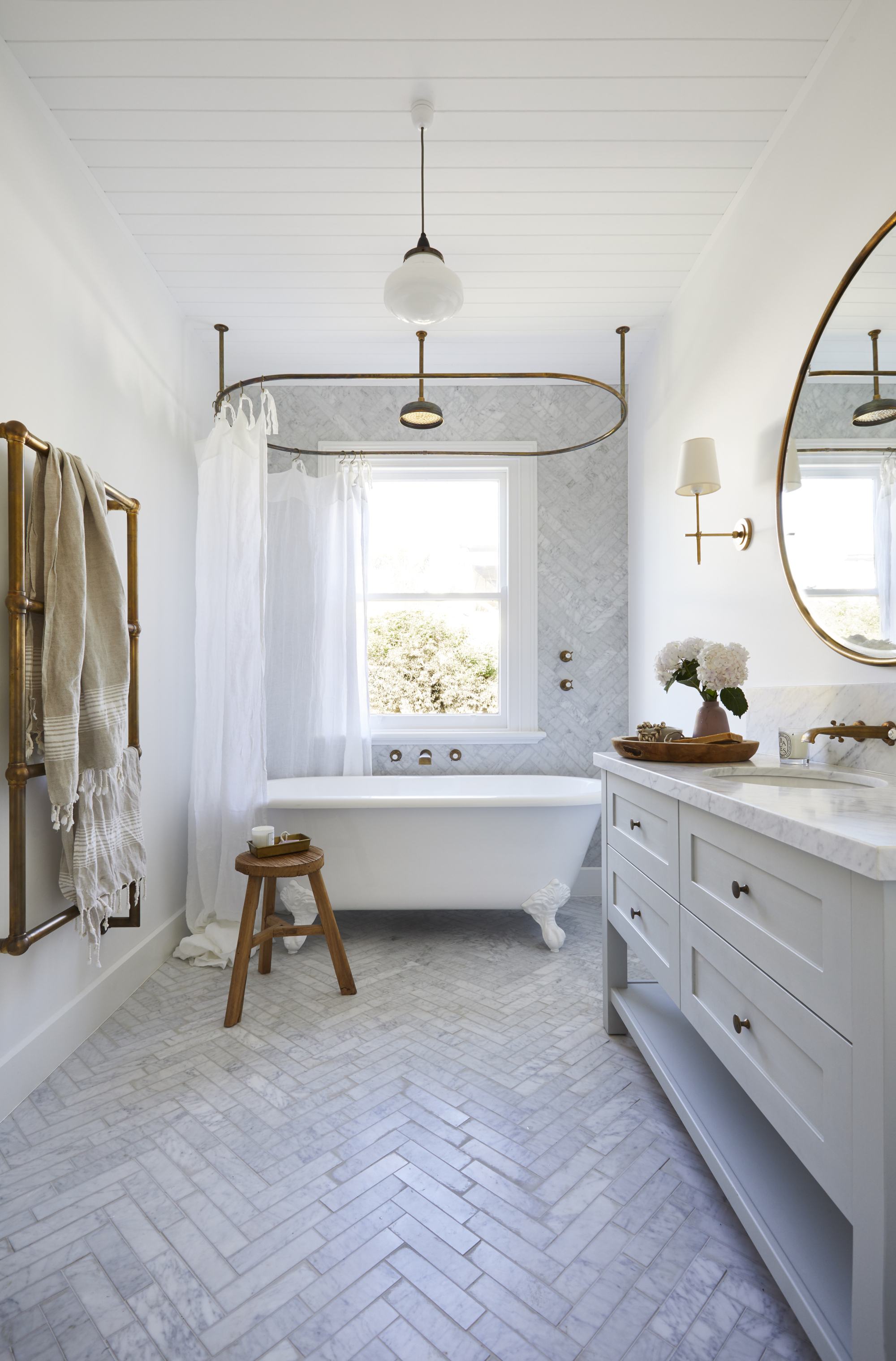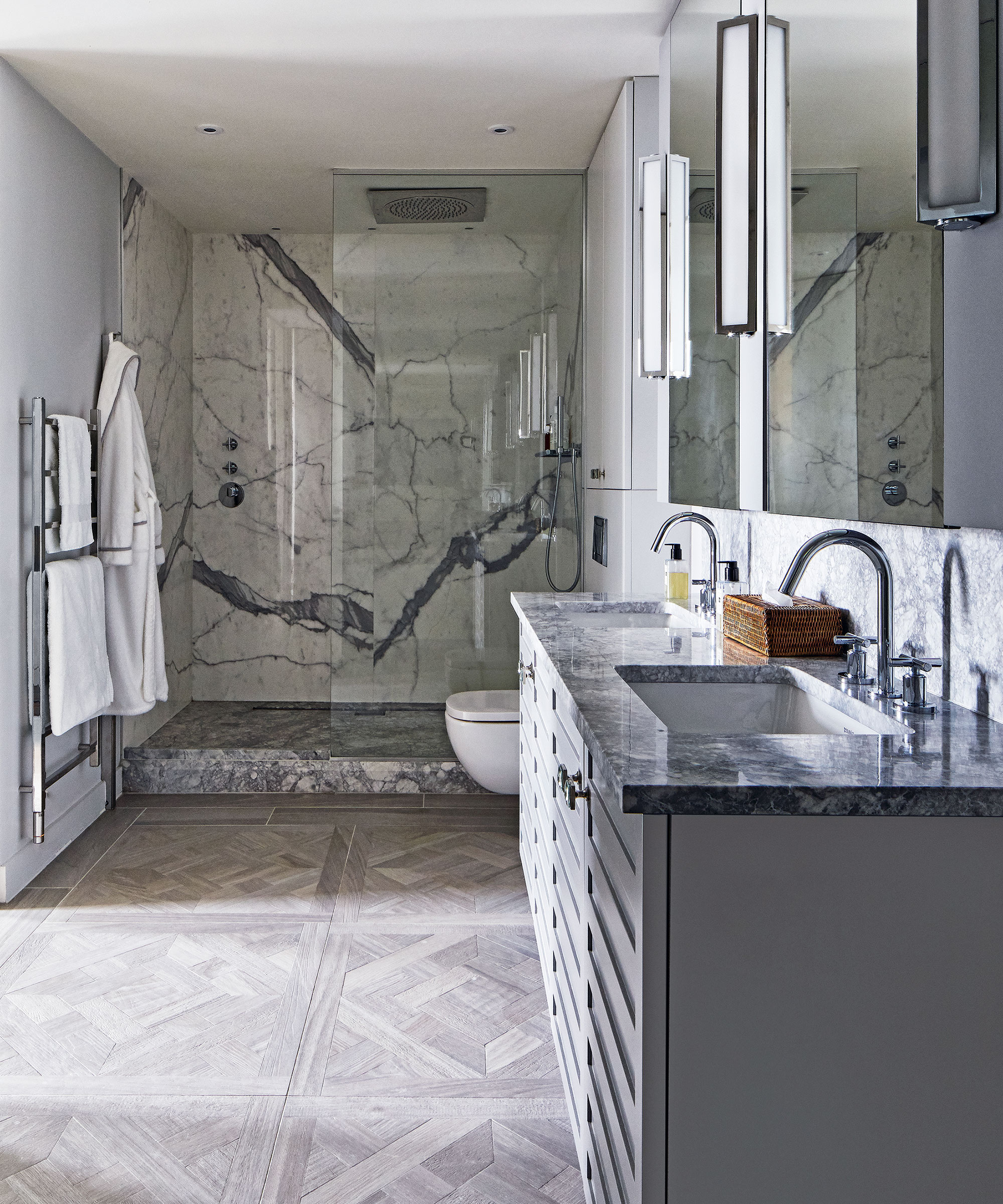Cleaning professionals say you should clean this one area first in a bathroom
Before scrubbing your whole space, make sure to clean this important area first


The bathroom is often considered one of the more difficult areas of the home to clean effectively, with many of us unclear on what to clean first.
Knowing the proper order to clean a bathroom can make this most tedious of household tasks a lot smoother, but given that each bathroom is different, working out where to start for an efficient clean can be difficult.
Here, Alicia Sokolowski, eco-cleaning expert, and co-CEO of AspenClean has explained where to begin, and how to get it right without harsh chemicals.

Alicia is the President and Co-CEO at AspenClean. AspenClean provides all-natural, chemical-free cleaning services that have revolutionized the cleaning industry and changed the way people clean their homes. It was the first detergent to be certified by the EWG. With over 17 years of experience, Alicia specializes in creating a healthier, green alternative to chemical-based cleaning products and services.
What to clean first in a bathroom

When cleaning a bathroom, the best place to start is by cleaning the bathtub and/or shower, and cleaning the bathroom sink, Alicia suggests, remembering to clean the showerhead too. ‘Do you associate the shower with always being clean? After all, the only thing you really use in the shower is soap and hot water. But shower tubs and curtains do get dirty. Dirtier than you would probably like to think.
‘Vinegar and water or baking soda and water work for cleaning soap scum that builds up in baths, showers, and sinks,’ Alicia Sokolowski explains. ‘If you find those solutions aren't tough enough for those hard-to-clean areas, try mixing baking soda and vinegar to make a paste. Apply the paste to the tougher cleaning areas and leave it to sit for a while so the acid in the vinegar can help break down the scum.’
Showers and sinks often do not require as harsh cleaning chemicals as toilets and bathroom floors, allowing you to work up through potent cleaners as you go and preventing cross-contamination between products.

While cleaning showers and sinks, you should also clean your shower curtain if you have one, Alicia says. ‘Over time, a shower curtain will easily accumulate soap scum, mildew, and grime. Damp environments are prime locations for breeding bacteria, so you should make a habit of cleaning the curtain with a bathroom spray cleaner on a regular basis.
Design expertise in your inbox – from inspiring decorating ideas and beautiful celebrity homes to practical gardening advice and shopping round-ups.
‘Most shower curtains can also be thrown in the wash just like a blanket or towel. Every three months is normally sufficient,’ she adds. Pulling the curtain down before you start cleaning will also help you to reach spots previously concealed for a truly thorough clean. Once washed, allow to air dry completely on the railing before showering again to help prevent mold.
What to clean last in a bathroom

Once you have tackled the rest of the bathroom, not forgetting about cabinet fronts, vanities, baseboards, windowsills, and so on, it is time to move on to the bathroom floor last, Alicia says. ‘Whether it’s tile or wax-free floors, bathroom moisture creates a risk for grout.' Alicia says that while it may be tempting to clean grout and floors with bleach, all you need for this is a handy microfiber cloth, a little over
a quarter cup of scouring powder, and a bucket of water.
‘Mix the scouring powder into a bucket of hot water, and use the microfiber cloth to cover the area of the floor. A little pro tip, add some lemon juice or a touch of lavender essential oil to the mixture, leaving a fresh-smelling floor.
‘If there are extremely problematic areas (such as mold or grout that cannot be removed), follow this alternative natural solution: Mix just over a quarter cup of scouring powder with four tablespoons of water. This creates a high-viscosity paste to be poured on an old toothbrush. Use these tools to scrub the toughest of stains.
‘For soap scum, use vinegar and water or baking soda and water for build-up in baths, showers, and sinks. If you find those solutions aren't tough enough for those hard-to-clean areas, try mixing baking soda and vinegar to make a paste. Apply the paste to the tougher cleaning areas and leave it to sit for a while so the acid in the vinegar can help break down the scum.’
What is the right order for cleaning a bathroom?
When cleaning a bathroom, you should always start by putting cleaning solution in the bathtubs, shower, and sink to start working on grime and bacteria as you work to tidy up the rest of the space. Once you have cleared the floors of mats and the vanity of products, scrub the sink, bath, and shower before moving onto the toilet, finishing with the floors – generally moving from top to bottom as you tackle the room.
What should you not do when cleaning a bathroom?
When cleaning a bathroom, you should always avoid using the same cloth or sponge for cleaning the toilet as you do for cleaning the sink. Not only can this spread bacteria to the tap you use to wash your face and brush your teeth with, but can cross-contaminate your sink with over-abrasive or harsh chemicals.

Chiana has been at Homes & Gardens for two years and is our resident 'queen' of non-toxic living. She spends most of her time producing content for the Solved section of the website, helping readers get the most out of their homes through clever decluttering, cleaning, and tidying tips. She was named one of Fixr's top home improvement journalists in 2024.